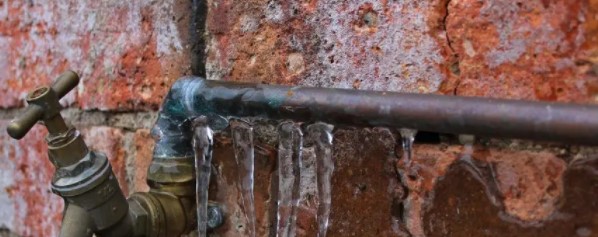Frozen pipes are a huge, but avoidable hassle

Frozen pipes are one of the last things you need after a period of snow and wind. If you discover that your pipes are already frozen, below is information on how to thaw them out.
If they’re not, here’s what you can do to help prevent a pipe from freezing. Many people don’t know that there are numerous steps they can take to help avoid having to deal with frozen pipes. Some things you can during the winter, others will take more lead time and preparation.
Before winter arrives
- Electrical heating tape should be applied to your pipes.
- You should insulate your attic, basement, and crawl space. If already insulated, make sure older insulation doesn’t need replacing/upgrading.
- Find the areas where water supply pipes are located. Consider both your hot and cold-water pipes. Check to make sure they are not in freeze prone areas of the house.
- Consider the design of your piping. Does it need to be reconfigured to reduce exposure to freezing temperatures? Consult a licensed plumber about this.
- Hire a plumbing contractor to install pipe insulation.
- Seal cracks and crawl spaces in your home that could let cold air in.
During the winter
- Let faucets drip – running water does not freeze as quickly as standing water.
- Keep inside doors open. This allows the whole house to stay at a consistent temperature.
- Keep cabinets in your kitchen and bathroom open. This allows warm air to circulate around the plumbing.
- Set your thermostat to at least 55F when you’re not at home.
- Keep your thermostat at a constant temperature throughout the day.
- What causes pipes to freeze?
Frozen pipes are especially difficult not just because they stop the flow of water. Frozen pipes may cause cracks, severe leaks, and flooding. As water freezes, it expands, sometimes to the point of cracking the pipes. Unheated interior spaces are at most risk. For example, 37 percent of all frozen pipe failures happen in the basement.
When to be on alert for frozen pipes
People don’t think about their pipes all winter. Most people don’t think about them at all until there’s a problem. But small precautions can help protect against an even bigger problem.
The “alert threshold” temperature for freezing pipes is:
20° F / – 6° C
Pipes can still freeze above this temperature if the right conditions exist. For example, a heated area exposed to cracks or openings can let cold air in. That can lead to ice blockages. You ought to know about any pipes that could be exposed to this “alert threshold”. If you are unsure, speak to A Plus Plumbing and Heating. We can help you.
What to do if your pipes freeze. First, Look out for these signs of a frozen pipe.
- No running water – Probably the most obvious and unmistakable sign.
- Frosted pipes – Check if any frost has formed on the surface of exposed parts of your pipes. This is a good indication that your pipe is frozen.
- Strange smells – A smell that comes from your drain/faucet can be a sign of a frozen pipe. This is because frozen pipes leave nowhere for smells to go but back into your home.
If you think you have got a frozen pipe problem
If your pipes haven’t burst, you can take measures to thaw them out. If there’s a rupture, you’re going to need to call out an a plumber.
- Turn on the faucet. Keep the water flowing, this will help to melt the ice and prevent further freezing.
- Apply heat to the frozen part of the pipe – You can use an electric heating pad, hair dryer or portable heater. Keep doing this until all the faucets in your home have full water pressure.
Can’t locate the frozen section of the pipe? Call a proven licensed professional, A Plus Plumbing and Heating.
